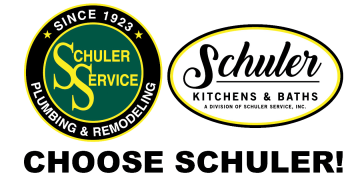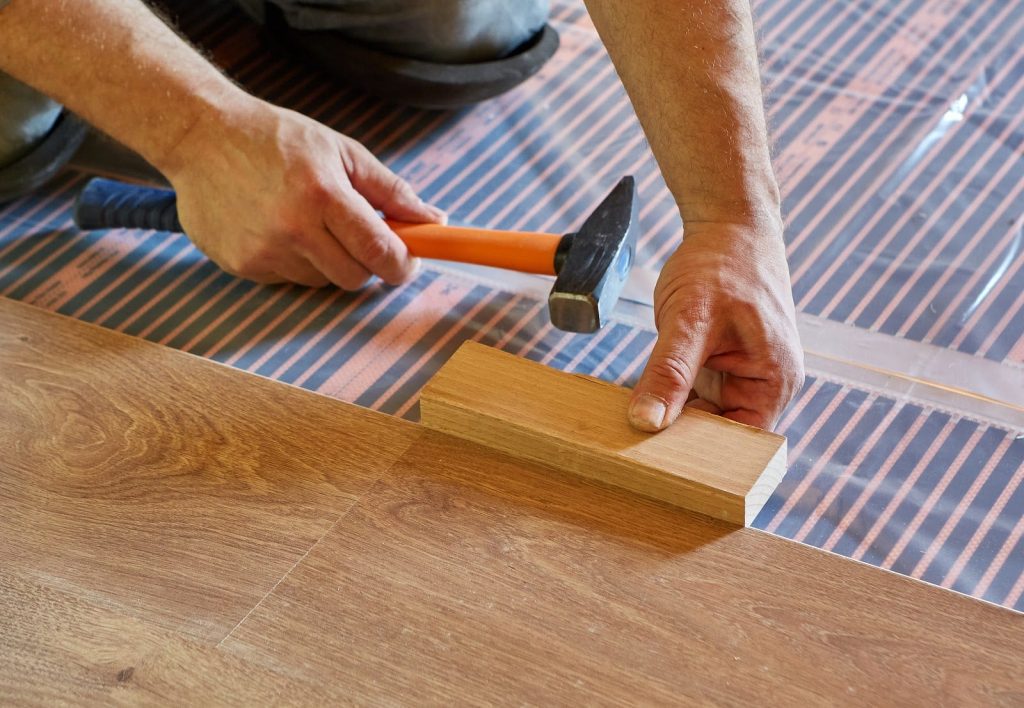When building or remodeling a home, there are a lot of choices to consider. One of the biggest and most important decisions to make is what heating system you will install that will effectively and efficiently keep you warm during the cold winter months.
Hydronic & Electric Radiant Floor Heating is becoming more popular in newer homes due to its energy efficient features, safety and comfort, design freedom, and low maintenance.
What is Radiant Floor Heating?
Radiant floor heating supplies heat directly to the floor through panels, rather than through vents, ductwork, or baseboard systems that are located throughout some homes. The heating system works by radiant heat transfer via infrared radiation.
There are three types of radiant floor heat: radiant air floors, electric radiant floors, and hydronic radiant floors. Air-heated radiant floors circulate hot air as the heating method, but this is the least common option chosen due to air not being capable of holding a large amount of heat. The most popular method installed in homes is a hydronic, or wet system. While this option is more expensive to install, it’s more cost-effective to run as it pumps hot water through underfloor pipes that heat the home. The last option is the electric, or dry, system, and that works by heating the floor via electric coils.
What are the Benefits of Radiant Floor Heating?
Safety and Comfort
Unlike some heating systems that involve ductwork and forced air circulating throughout your home, radiant floor heating eliminates dust and allergens from being blown into the air. Traditional air ducts can host dust, mold, dirt, and even bugs that can affect your home’s air quality and make residents ill.
Radiant floor heating eliminates that problem and also operates noise-free, so you’ll no longer have to listen to fans blowing all night long. Not only is this system hypoallergenic and quiet, but it also does not dry the air out like a traditional duct system would.
Energy Efficient
Duct work isn’t perfect and hot air can escape the system before it even arrives to the room it is intended to heat. Another factor the impacts the efficiency of heat blowers is the fact that hot air rises. The air that is pumped into the room through vents quickly rises to the ceiling, requiring more energy to create enough heat to keep the room at a comfortable and consistent temperature.
The average radiant heated home in the United States will see a typical 25% energy savings over conventional heating systems. Air blowers often require 9x the amount of electricity that it takes to produce radiant heat. When you install radiant floor heating in you’re home, you’ll receive more effective and energy efficient heating.
Design Freedom
If you’re building a new home or adding an addition to your current property, you don’t want to be limited and restrained to your design choices. While some heating systems, such as radiators, take up wall space and can be an eyesore, radiant heating is installed under the floors and is invisible to see. It frees up extra space for you to arrange your furniture and decorate as you please.
Radiant floor heating also works with all floor coverings. You can choose tile and stone, carpet, wood and laminate, or even vinyl. The freedom is all yours!
Low Maintenance
Once installed, underfloor radiant heating requires little to no maintenance. You won’t have to worry about scheduling annual duct cleanings or inspections and service tune-ups. The systems are effortless to run and most companies offer a warranty to give you complete peace of mind.
Should an incident occur with your radiant floor heating unit, call Schuler Service. We provide full-service repairs and replacements on all heating units and 24 hour emergency and same day service so you won’t have to suffer without heat for long.
Contact Schuler Service Today
Are you considering installing radiant floor heating in your home and you want to know more about the many benefits of the system? Call Schuler Service. We’re happy to answer any and all questions about hydronic radiant floor heating! This type of heating system features a straightforward installation and is less disruptive than forced-air systems.









